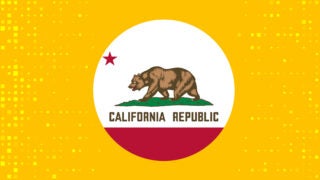
Fake news and misinterpreted information is most likely spread by people, not bots or trolls, says USC expert Emilio Ferrara. (Illustration/iStock)
How Americans can help stop fake news
Worried about democracy? Concerned about inaccuracies regarding COVID-19? USC researchers share how all of us could assist in limiting the spread of misinformation.
Claims of election fraud have been debunked but repeated. Myths about COVID-19 precautions like masks and social distancing persist, even as a third wave of infections rolls through the country. Research has shown that fake news is bad for democracy — and in a pandemic, it may be a matter of life or death.
About 1 in 5 Americans get their news from social media, according to the Pew Research Center. While a recent Science Advances study stated that not even a tenth of 1% of the content people see is fake news, scientists note that many misunderstand what they are reading or watching, even from legitimate sources. They all agree the spread of fake news and misinformation — including misunderstanding real news — across social media communities is a worsening problem.
Ideas for stopping fake news have run the gamut. Some of them, such as censorship of social media posts, run counter to American ideals and — in some instances — free speech. USC scientists are recommending other moves to curtail the rise of misinformation, including new ideas for social platforms to avoid issues with censorship.
Through quality control, media companies can help stop fake news
Longtime journalist and adjunct professor Marc Ambinder believes that all media companies — not just the social platforms — could implement better quality control for the content that ends up shared among users.
“All platforms need to set up viral ‘circuit breakers’ so they can immediately assess whether rapidly shared material is harmful to election integrity or public health,” recommended Ambinder, a senior fellow at the Center on Communication Leadership and Policy at the USC Annenberg School for Communication and Journalism.
“That should be the threshold for action, because anything more than that risks generating the attention-grabbing meta-debate about censorship and expression and anything less could be damaging to democratic institutions.”
A simple tip to combat misinformation is for platforms to … control the amount of information that a user is exposed to at a time.
Kimon Drakopoulos
The problem isn’t just that people are seeking and sharing fake news stories that play to their biases. They are misunderstanding real content that they see on TV, read on traditional news sites or spot friends sharing when they are skimming social platforms, scientists say.
“Surprisingly, in a recent paper, we show that even if the information was of good quality and unbiased, [political] polarization naturally arises due to ‘information inundation,’ where users have access to a vast amount of information,” said Kimon Drakopoulos, assistant professor at the USC Marshall School of Business with expertise in data science and social network systems.
“Therefore, a simple tip to combat misinformation is for platforms to not censor content — which can have very adverse effects — and just control the amount of information that a user is exposed to at a time,” he added. “This can be a limit in the size of the news feed or a random sampling of only a few articles per topic that are presented to users.”
That’s right: Drakopoulos believes social media users need to be put on an information diet.
To limit the spread of misinformation, reread and research
Consumers also could be more selective, said Kristina Lerman, research project leader at the USC Information Sciences Institute and a research associate professor at the USC Viterbi School of Engineering. “Follow a diverse set of accounts for a varied information diet,” she advised.
Ultimately, people are the superspreaders of fake news and misinterpreted information. USC scientists urge individuals to consider steps that they can take, even just to check themselves.
“Most misinformation is spread by people — not by bots, foreign actors or troll accounts,” said Emilio Ferrara, a research team leader at USC Information Sciences Institute and an associate professor at the USC Viterbi and USC Annenberg.
Most misinformation is spread by people — not by bots, foreign actors or troll accounts.
Emilio Ferrara
“Before sharing something on Twitter or Facebook, it’s crucial to assess the provenance, credibility and authority of the source of that news or information,” he said. “Who published it? A well-established and credible person, or a shady account that maybe appears to post a lot of sensationalistic or divisive content? If there is a link in the post, where does the link point to? Is it a well-known news outlet or a maybe suspicious website?
“Also, who else is talking about this news? Have you seen a diverse set of individuals and organizations discussing this issue or does it appear to be from a niche group with unusual or divisive positions?”
Good Samaritans on the internet may want to help stop fake news by pointing it out to friends, family or other contacts, but they should be careful how they go about it. They may inadvertently do more harm. Research by Provost Professor of Psychology Norbert Schwarz has shown that the lie tends to stick with people.
“Never repeat false information,” said Schwarz, a co-director of the Mind and Society Center at USC Dornsife College of Letters, Arts and Sciences. “Once people hear it, it is difficult to correct.”
“If you, as a journalist, have to report on it, make the story about the lie itself,” suggested Schwarz, who also is a consumer psychology expert at USC Marshall and recently co-edited the book, The Psychology of Fake News. “Start with the truth. Explain that Person X spread false information and say why they may have done so if you can. Present the false information only after that, and not in vivid detail. Repeat why it is false.”



